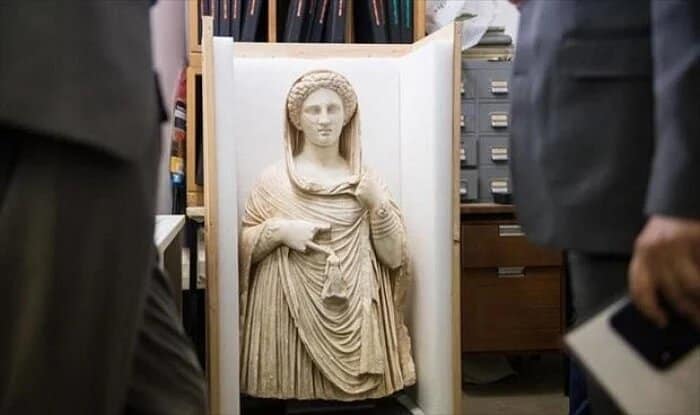After a long legal battle, the British Museum last week returned a looted ancient Greek statue of the goddess Persephone to Libya, estimated to be worth £1.5m ($2.1m).
According to a statement by the Libyan Foreign Ministry, the recovery of the Persephone statue took place at the headquarters of the Libyan Embassy in London, with a handover minute signed by the Libyan Acting Charge D’affairs and the Head of Greek and Roman Department at the British Museum Peter Hugo.

A collector took the ancient Greek statue from a world heritage site in Shahhat in 2012.
The piece was illegally excavated from a grave in the ruins of Cyrene, an important Hellenic city located in the north of what is now Libya, and then subsequently smuggled into the United Kingdom.
The four-foot marble relic is of a hooded woman believed to be a representation of the queen of the underworld, Persephone.
The statue dates from the third or fourth century BC, and Dr Peter Higgs, a curator of Greek sculpture at the British Museum, described it as “one of the best examples of its type and … extremely rare”.
A 2015 ruling ruled that the statue, which was in the possession of Jordanian national Riad al-Qassas, had been “incorrectly declared” on arrival to the UK as border officials believed it was worth £72,000 and originally Turkish.
The artifact was discovered in a west London warehouse by customs officials, before being handed to the British Museum as the court ruled on its ownership.
The statue dates from the third or fourth century BC, and Dr Peter Higgs, a curator of Greek sculpture at the British Museum, described it as “one of the best examples of its type and … extremely rare”.
A 2015 ruling ruled that the statue, which owned Jordanian national Riad al-Qassas, had been “miss declared” on arrival to the UK as border officials believed it was worth £72,000 and originally Turkish.
The artifact was discovered in a west London warehouse by customs officials, before being handed to the British Museum as the court ruled on its ownership.
Cyrene was an important ancient Greek city
Cyrene, the ancient Greek and later Roman city near present-day Shahhat, Libya, was the oldest and most important of all five Greek cities in the region.
It gave eastern Libya the classical name of Cyrenaica that it has retained into modern times. Located nearby is the ancient Necropolis of Cyrene.
More than two thousand years ago, a group of Greeks from the island of Thira (also known as Santorini) headed south, searching for a new place to live. Their journey ended in the northern part of Africa, in modern-day Libya.
These Greek settlers established a new city, calling it Cyrene, which became prosperous and had trade ties with every Greek city in what is now the modern Greek mainland and islands.
It was one of the principal cities in the ancient Greek world, with its temples, tombs, agora, gymnasium and Cyrene Amphitheatre all thought to be inspired by the historic structures at Delphi.
The city became a Republic in 460 BC, following the political tradition that Athens had established.
Cyrene contributed to the intellectual life of the ancient Greek world through its renowned philosophers and mathematicians.
Cyrene’s ruins remain there to remind the region’s rich past, which was shaped by Greeks and Romans alike.
Included on the UNESCO World Heritage List in 1982, Cyrene today ranks among the List’s most neglected and endangered sites in the Mediterranean Basin due to its Greek artifacts' improper restoration and extensive looting.
